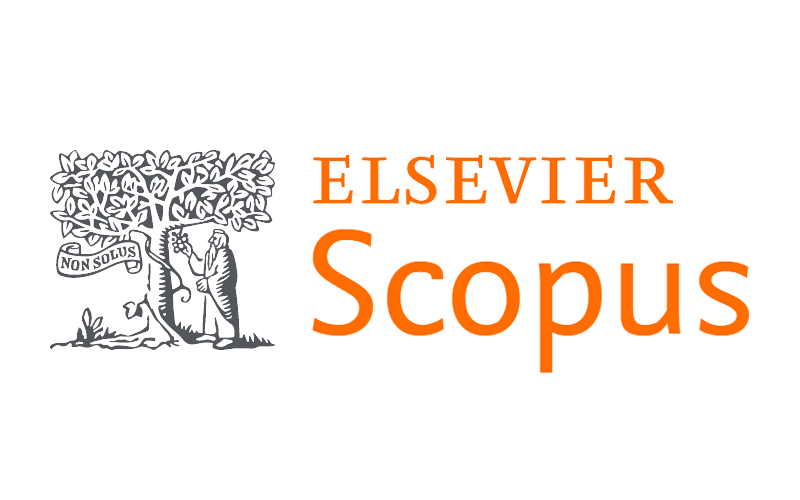Nocardia species epidemiology and susceptibility profiles from 2019 to 2022 in South Africa
DOI:
https://doi.org/10.7196/SAMJ.2025.v115i7.2761Keywords:
Nocardia, South Africa, Epidemiology, Antibiotic susceptibility testingAbstract
Background. Nocardia species cause infections in humans, from localised to disseminated disease. They constitute a public health threat owing to the lack of sufficient information about them. In South Africa (SA), the last publication on this organism was in 2010. Predominant species types and antibiotic susceptibilities may have changed over this period.
Objective. To address the knowledge gap surrounding Nocardia species and their antibiotic susceptibilities in SA.
Methods. This was a retrospective and cross-sectional study. Data were collected from the Central Data Warehouse (CDW) of the National Health Laboratory Service (NHLS) on suspected Nocardia species from 1 January 2019 to 31 December 2022. Organism speciation was performed using 16S rRNA sequencing and antibiotic susceptibility testing (AST) by the broth microdilution (BMD) method. Data analysis included patient age, sample types from which the organism was cultured, distribution in the various SA provinces, species types and species AST profiles, including a record of trimethoprim-sulfamethoxazole (TMP/SMX) non-susceptibility.
Results. One hundred and sixty-five positive culture results were analysed. The majority of positive cultures (28%, n=46) were from the 30 - 39-year age group. The organism was predominantly cultured from pus samples (31%, n=51). The top two provinces from which the largest numbers of isolates were submitted were Gauteng (69%, n=114) and Western Cape (18%, n=30) provinces. Two percent (n=4) of isolates were not sequenced, and 18% (n=30) of isolates lacked AST results. Twenty-nine percent (n=47) of the Nocardia species that were sequenced could not be speciated using 16S rRNA sequencing. The top two species country-wide were N. abscessus complex (25%, n=42) and N. cyriacigeorgica (18%, n=29). Approximately 90% (n=121) of all isolates tested were TMP/SMX susceptible.
Conclusion. The predominant isolation of Nocardia species from pus samples suggests that the majority were deep-seated infections. The most common Nocardia species types and the AST profiles have changed over time. The study highlights the need for alternative methods for the speciation of this organism.
References
[1] Jones N, Khoosal M, Louw M, Karstaedt A. Nocardial infection as a complication of HIV in South Africa. J Infect. 2000 Nov;41(3):232-239. doi:10.1053/jinf.2000.0729.
[2] Brown-Elliott B, Brown JM, Conville PS, Wallace RJ Jr. Clinical and laboratory features of the Nocardia spp. based on current molecular taxonomy. Clin Microbiol Rev. 2006;19 (2):259-282. doi: 10.1128/CMR.19.2.259-282.2006
[3] Uhde K, Pathak S, McCullum J, Jannat-Khah DP, Shadomy SV, Dykewicz CA, et al. Antimicrobial-resistant Nocardia isolates, United States, 1995–2004. Clin Infect Dis. 2010;51(13):1441 - 1448. doi: 10.1086/657399
[4]“Nocardiosis: Background, Pathophysiology, Epidemiology,” Jun. 2023, [Online]. Available: https://emedicine.medscape.com/article/224123-overview#a6
[5] Saubolle MA, Sussland D. Nocardiosis: Review of clinical and laboratory experience. J Clin Microbiol. 2003;41(10):4497-4501. doi:10.1128/jcm.41.10.44974501.2003
[6] Gombert M, Aulicino TM, DuBouchet L, Silverman GE, Sheinbaum WM. Therapy of experimental cerebral nocardiosis with imipenem, amikacin, trimethoprim-sulfamethoxazole, and minocycline. Antimicrob Agents Chemother. 1986;30(2):270-273. doi: 10.1128%2Faac.30.2.270
[7] Conville P, Brown-Elliott BA, Wallace RJ jr, Witebsky FG, Koziol D, Hall GS, et al. Multisite reproducibility of the broth microdilution method for susceptibility testing of Nocardia species. J Clin Microbiol. 2012;50 (4):1270-1280. doi:10.1128/jcm.00994-11
[8] Mehta H, Shamoo Y. Pathogenic Nocardia: A diverse genus of emerging pathogens or just poorly recognized? PLOS Pathogens. 2020; 16 (3): 1-7. doi:10.1371/journal.ppat.1008280
[9] Schlaberg R, Fisher MA, Hanson KE. Susceptibility profiles of Nocardia isolates based on current taxonomy. Antimicrob Agents Chemother. 2014; 58 (2): 795-800. doi: 10.1128/aac.01531-13
[10] National Committee for Clinical Laboratory Standards (NCCLS). Susceptibility testing of mycobacteria, Nocardiae and other aerobic actinomycetes: approved standard M24-A (NCCLS, 2003).
[11] Hashemi-Shahraki A, Heidarieh P, Bostanabad SZ, Hashemzadeh M, Feizabadi MM, Schraufnagel D, et al. Genetic diversity and antimicrobial susceptibility of Nocardia species among patients with nocardiosis. Sci Rep. 2015; 5:17862. doi: 10.1038/srep17862
[12] Valdezate S, Garrido N, Carrasco G, Medina-Pascual MJ, Villalón P, Navarro AM, et al. Epidemiology and susceptibility to antimicrobial agents of the main Nocardia species in Spain. J Antimicrob Chemother. 2017;72 (3):754-761. doi:10.1093/jac/dkw489.
[13] Lebeaux D, Bergeron E, Berthet J, Djadi-Prat J, Mouniée D, Boiron P, et al. Antibiotic susceptibility testing and species identification of Nocardia isolates: a retrospective analysis of data from a French expert laboratory, 2010-2015. Clin Microbiol and Infect 2019;25 (4) :489-495. doi: 10.1016/j.cmi.2018.06.013
[14] Tan Y, Chen SC, Halliday CL. Antimicrobial susceptibility profiles and species distribution of medically relevant Nocardia species: Results from a large tertiary laboratory in Australia. J Glob Antimicrob Resist. 2020; 20:110-117. doi:10.1016/j.jgar.2019.06.018
[15] Yang J, Ren H, Wang J, Dong A, Chen Y, Hu D, et al. Clinical characteristics, susceptibility profiles, and treatment of nocardiosis: a multicenter retrospective study in 2015-2021. Int J Infect Dis. 2023; 130: 136-143. doi:10.1016/j.ijid.2023.02.023
[16]Lowman W, Aithma N. Antimicrobial susceptibility testing and profiling of Nocardia species and other aerobic actinomycetes from South Africa: comparative evaluation of broth microdilution versus the Etest. J Clin Microbiol. 2010;48 (12):4534-4540. doi: 10.1128%2FJCM.01073-10
[17]Clinical and Laboratory Standards Institute (CLSI). Interpretive criteria for identification of bacteria and fungi by targeted DNA sequencing. 2nd ed. CLSI guideline MM18. Clinical and Laboratory Standards Institute, Wayne, PA. (2018)
[18] Clinical and Laboratory Standard Institute. Susceptibility testing of Mycobacteria, Nocardiae, and other aerobic Actinomycetes: approved standard, second edition ( 2011)
[19] Bowen P., Govender R., Edwards P. and Lake A. HIV infection in the South African construction industry. Psychology, Health and Medicine, 2018; 23 (5): 612 - 618, doi. 10.1080/13548506.2017.1380836
[20] STATS SA 2022, Department of Statistics, South Africa. http://www.statssa.gov.za
[21] Xu S, Li Z, Huang Y, Han L, Che Y, Hou X, et al. Whole genome sequencing reveals the genomic diversity, taxonomic classification, and evolutionary relationships of the genus Nocardia. PLOS Negl Trop Dis. 2021; 15 (8). doi:10.1371/journal.pntd.0009665
[22] Rudramurthy S M, Honnavar P, Kaur H, Samanta P, Ray P, Ghosh A, et al. Molecular identification of clinical Nocardia isolates from India. J Med Microbiol 2015; 64, 1216–1225. doi. 10.1099/jmm.0.000143
[23] Xiao M, Pang L, Chen S C , Fan X, Zhang L, Li H, et al. Accurate Identification of Common Pathogenic Nocardia Species: Evaluation of a Multilocus Sequence Analysis Platform and Matrix-Assisted Laser Desorption Ionization Time of Flight Mass Spectrometry. PLOS ONE 2016; 11(1): e0147487. doi:10.1371/journal.pone.0147487
[24] Carrasco G, Valdezate S, Garrido N, Villalón P, Medina-Pascual M J, Sáez-Nieto J A. Identification, typing, and phylogenetic relationships of the main clinical Nocardia species in Spain according to their gyrB and rpoB genes. J Clin Microbiol 2013; 51 (11), 3602-3608. doi: 10.1128/JCM.00515-1
[25] Gupta S, Grant LM, Powers HR, Kimes KE, Hamdi A, Butterfield RJ, et al. Invasive nocardia infections across distinct geographic regions, United States. Emerg Infect Dis 2023; 29(12):2417-2425. doi: 10.3201/eid2912.230673
[26] Kuo SF, Chen FJ, Lan IC, Chien CC, Lee CH. Epidemiology of Nocardia Species at a Tertiary Hospital in Southern Taiwan, 2012 to 2020: MLSA Phylogeny and Antimicrobial Susceptibility. Antibiotics 2022;11(10):1438. doi:10.3390/antibiotics11101438
[27] Valdezate S, Garrido N, Carrasco G, Medina-Pascual MJ, Villalón P, Navarro AM, Saéz-Nieto JA. Epidemiology and susceptibility to antimicrobial agents of the main Nocardia species in Spain. J Antimicrob Chemother 2017;72(3):754-61. doi: 10.1093/jac/dkw489.
[28] Hamdi AM, Fida M, Deml SM, Abu Saleh OM, Wengenack NL. Retrospective analysis of antimicrobial susceptibility profiles of Nocardia species from a tertiary hospital and reference laboratory, 2011 to 2017. Antimicrob Agents Chemother 2020;64(3):10-128. doi: 10.1128/AAC.01868-19
[29] Besteiro B, Coutinho D, Fragoso J, Figueiredo C, Nunes S, Azevedo C, Teixeira T, Selaru A, Abreu G, Malheiro L. Nocardiosis: a single-center experience and literature review. Brazilian Journal of Infectious Diseases 2023;27(5):102806. doi: 10.1016/j.bjid.2023.102806
Downloads
Published
Issue
Section
License
Copyright (c) 2025 T Thomas, M Lowe, K Le Roux, K-A Strydom

This work is licensed under a Creative Commons Attribution-NonCommercial 4.0 International License.
Licensing Information
The SAMJ is published under an Attribution-Non Commercial International Creative Commons Attribution (CC-BY-NC 4.0) License. Under this license, authors agree to make articles available to users, without permission or fees, for any lawful, non-commercial purpose. Users may read, copy, or re-use published content as long as the author and original place of publication are properly cited.
Exceptions to this license model is allowed for UKRI and research funded by organisations requiring that research be published open-access without embargo, under a CC-BY licence. As per the journals archiving policy, authors are permitted to self-archive the author-accepted manuscript (AAM) in a repository.
Publishing Rights
Authors grant the Publisher the exclusive right to publish, display, reproduce and/or distribute the Work in print and electronic format and in any medium known or hereafter developed, including for commercial use. The Author also agrees that the Publisher may retain in print or electronic format more than one copy of the Work for the purpose of preservation, security and back-up.





